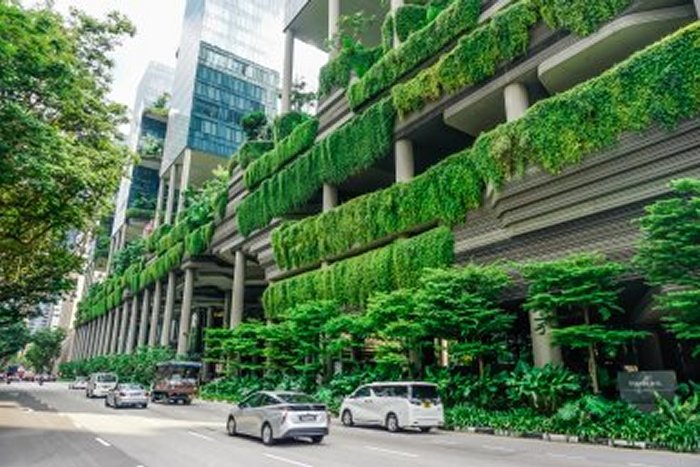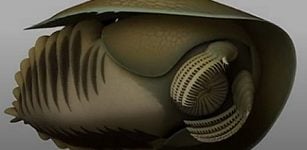Green Walls Deliver Cooling Effect Against Urban Heat And Help Biodiversity
Eddie Gonzales Jr. – MessageToEagle.com –Plant-covered facades cool urban areas and provide habitats for various organisms. An international research team concluded this after comparing green walls, bare walls, and natural cliffs.
Green walls, or vertical greenery systems, in Singapore. Image source
“Green walls can be much more than just a decorative trend”, says Katharina Hecht. Up until now, construction companies and authorities promoting green walls have lacked hard evidence for their claims. Hecht’s study now sheds light on how much these lush, green walls boost biodiversity and under what conditions in addition to reducing urban heat.
An international team of researchers analysed a total of 20 walls in Singapore’s urban environments.
Green walls were shown to significantly reduce air temperatures around buildings. Researchers found daytime cooling effects of up to 0.6 – 0.7 degrees Celsius between the front and back side of green walls.
“This might sound like a small difference,” says Hecht. “But in the context of urban heat, even small reductions can lower energy costs, and make buildings more comfortable to life and work in.” With more and more green walls being built, this cooling effect can contribute to mitigating the urban heat island phenomenon. “It also helps improve overall climate resilience in cities.”
Green walls supported over 100 animal species, including insects, spiders, and birds—far more than the few species found on non-vegetated walls. Researchers also mapped natural cliffs in urban environments, to see how a natural ‘wall’ would attract more biodiversity than man-made walls. Overall, natural cliffs supported slightly higher biodiversity levels.
“This shows that we can learn from nature’s design strategies to enhance man-made green walls,” says Hecht. While there is still room for improvement, she emphasizes that green walls serve as a vital alternative to natural cliffs in urban areas. “They provide valuable habitats in places that would otherwise be inhospitable for many species.”
Building green walls is just the start, Hecht warns. For these walls to reach their full potential, the surrounding environment plays a crucial role.
“What I found really interesting to confirm in our study is how important trees and other vegetation are,” she says. “The crowns of nearby trees and patches of greenery serve as stepping stones. They allow bees, bugs, and even small birds to hop from tree to tree, and eventually reach the green walls.”
Without this surrounding greenery, green walls may struggle to attract diverse species, limiting their ecological impact. “It’s about creating an ecological network,” says Hecht. “Green walls work best when they’re part of a bigger system of urban biodiversity.”
While this study focused on Singapore’s tropical climate, Hecht believes the findings apply to temperate climates like the Netherlands. “The principles are similar,” Hecht says, but plant species and designs must suit local biodiversity and weather. In temperate climates, mosses, perennials, and local climbers often colonize walls naturally, influencing which species thrive on green walls.
The Netherlands, with its growing number of green infrastructure projects, could be an ideal setting for further research on green walls, says Hecht.
She points out that creating networks of green spaces, as highlighted in her study, is just as critical in temperate regions to ensure that green walls function effectively as habitats. Earlier studies in the Netherlands, by students from Utrecht University, have already shown promising signs. But Hecht emphasizes that more empirical research is needed to confirm the potential of green walls to enhance biodiversity and climate resilience in northern Europe.
Hecht is working on a follow-up project at Utrecht University’s Pathways to Sustainability program. Her team is creating a digital system to collect data on the benefits of green walls and sustainable building designs from different climates, facilitating result comparison.











